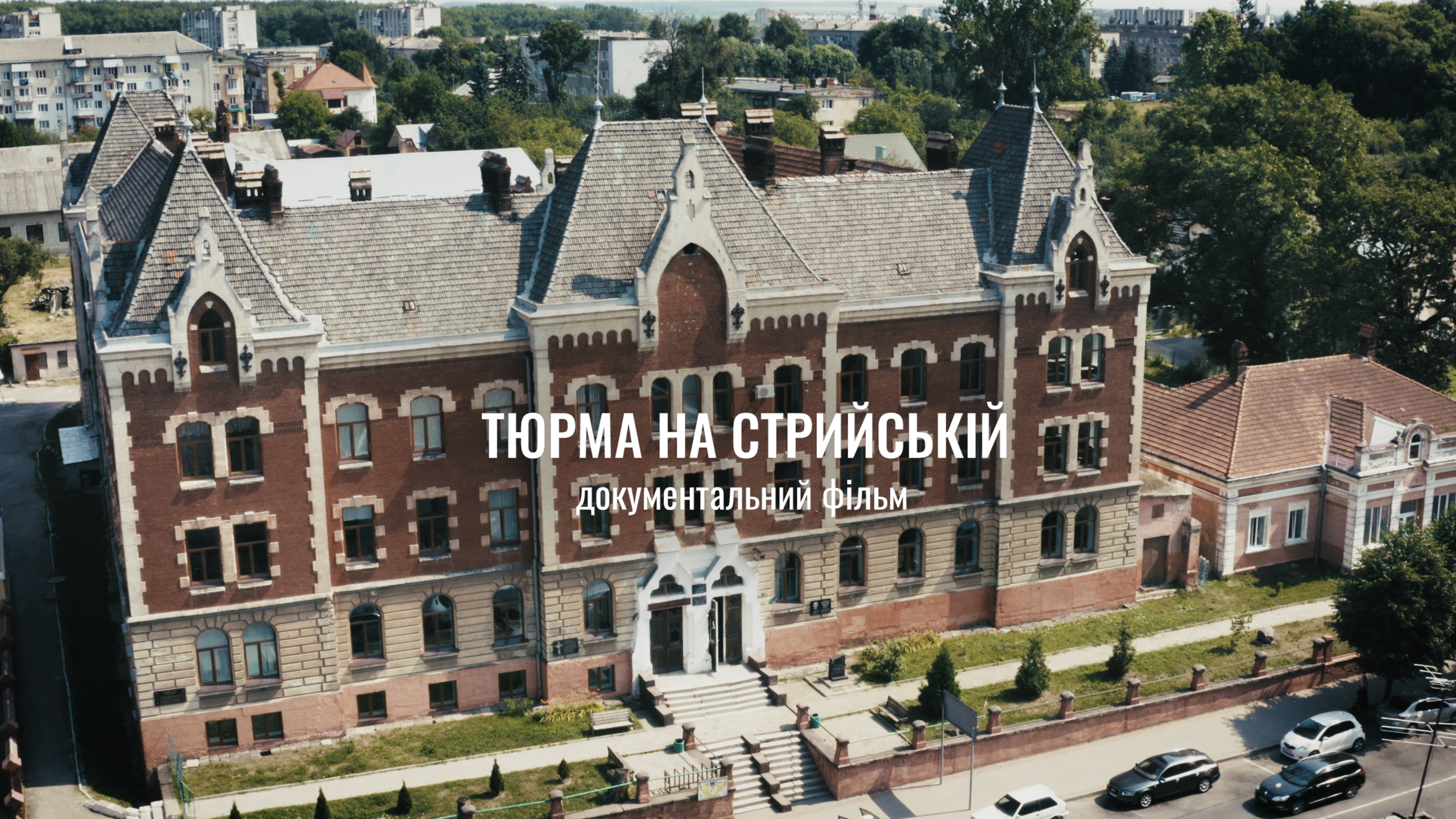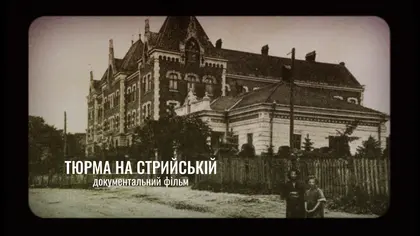“The Prison on Striyska Street” is a short documentary produced by the Kyiv-based DocNoteFilms studios. It premiered on state-owned Suspilne regional channels and YouTube in late January 2022.
Director Kostyantyn Klyatskin and producer Serhiy Malyarchuk owe it to a grassroot initiative by residents of Drohobych, Lviv region, who suggested revealing one of the most tragic pages of their city’s history.
JOIN US ON TELEGRAM
Follow our coverage of the war on the @Kyivpost_official.
The building that houses Drohobych University’s Department of Physics and Mathematics on Sriyska Street was built for the county court at the turn of the 19th century. It was a time when most of Western Ukraine belonged to the Austro-Hungarian Empire. In those days, Drohobych was an important business and trade center based on salt mines and rich oil deposits. After World War I, it was taken over by Poland.

Days after World War II broke out in September 1939, Poland was divided between Nazi Germany and the USSR under the Molotov-Ribbentrop Pact. Drohobych found itself on the Soviet side.
The courthouse on Striyska Street headquartered the regional department of the NKVD (People’s Commissariat of Internal Affairs) and later the NKGB (People’s Commissariat of State Security), the predecessors of the KGB. Like in all other such institutions, there was an interior prison.
Reprisals and arrests began immediately after Soviet rule was installed. “Enemies of the people” were arrested, interrogated, and then deported or executed. As with everywhere across the USSR, executions took place inside the NKVD building.

EU Transfers €1.5 Bln Raised From Russian Assets for Ukraine
On June 22, 1941, Nazi Germany invaded the USSR and the Wehrmacht troops strode toward Drohobych and other cities in Western Ukraine. By the order of the NKGB, all prisoners were divided into two categories depending on the severity of their “crimes”: the less “guilty” were transferred to camps in the Urals, Siberia or Kazakhstan; and the rest were subject to immediate execution.
Because the German army was making a very fast advance, the authorities had no time to transfer prisoners. Instead, they simply killed them. Within one week alone, more than 1,000 allegedly “disloyal” people were executed in the basement and courtyard of the prison on Striyska Street.
During the German occupation of Drohobych, which lasted almost three years, the building served as a courthouse once again. The Nazi authorities hunted for members and supporters of the Organization of Ukrainian Nationalists (OUN), Polish and Soviet underground fighters and saboteurs, as well as Jews. Since German courts did not handle civil cases during that time, there were no mass executions in the courthouse on Striyska Street.
In 1944, when the Soviets returned to Drohobych, the building again housed the NKVD department amidst resumed repressions, torture and executions. Later, this punitive body changed names several times and was finally named the State Security Committee (KGB).
In 1959, when the “Khrushchev thaw” began, the building on Striyska Street was handed over to the Drohobych Pedagogical Institute. The authorities strictly forbade any works in the building or excavations in the courtyard without a special permit from the KGB.
Any talk about the building’s bloody history was also forbidden. But the locals remembered the horrible things that had happened there and secretly told their children about them.
In 1990, when Gorbachev’s perestroika was in full swing in the USSR, many more facts surfaced about Communist reprisals. At the initiative of the Memorial historical enlightenment organization of Drohobych District, headed by Myron Buchatsky, a Mikhail member of the Lviv Regional Council, and with the approval of Ivan Franko State Pedagogical Institute, excavations began on its premises and continued until August 20, 1990.
Members of the Memorial and the People’s Rukh of Ukraine, comprising volunteers led by Myron Buchatsky and forensic experts, exhumed the remains of 486 people.
The news of the horrible find shocked Ukraine and received countrywide media coverage.
On September 11, 1990, the Lviv Regional Prosecutor’s Office took criminal action. On October 16, the government of the Ukrainian Soviet Republic set up an ad hoc commission whose official conclusions read: “The persons whose remains were found during excavations on the premises of the Pedagogical Institute at 3 Striyska Street belong to victims of the repressions by the NKVD-NKGB under the Stalin regime, dated 1939-1941.”
It was a unique case of official acknowledgement of the repressions by the Soviet authorities.
Some of the remains were identified as those of Catholic priests, members of pro-Ukrainian organizations, teachers and students, along with ordinary men and women. All the victims had been tortured.
On July 14, 1991, thousands of people, including members of public organizations, managers of industrial enterprises and hundreds of activists, gathered at the central square of Drohobych for a requiem meeting. A mass funeral followed for victims of the Soviet regime. The remains were buried in four common graves at the city cemetery on the Field of Grief.
Now, three eventful decades later, memorial signs on Striyska Street retain just a few reminders of the tragedy. Younger Ukrainians hardly know anything at all about it.
In 2011, local public activists and priests initiated the construction of a memorial complex. Its first section, called Drohobych Martyrology, was unveiled in July 2012. Eleven months later, the Museum of Drohobych unveiled a branch called Prison on Striyska.
In 2018 and 2019, new excavations were carried out in the monastery garden near the Prison on Striyska, which revealed more human remains that likely belonged to people killed after 1944.
How did the courthouse become a torture house and then a university? What crimes remain hidden behind these walls? How many victims of Soviet terror were buried in the garden near this building? How was the memory of the innocent victims restored?
The documentary “The Prison on Striyska Street” provides answers which are confirmed, among others, by those who initiated the excavations in 1990. It includes unique footage and archival materials, as well as stories told by the relatives of victims.
The film shows dramatic events going back more than half a century and the early 1990s, when the hideous truth was revealed of the torture house on Striyska Street. Then, it seemed that such a tragedy would never happen again.
Unfortunately, history repeats itself. After Russia grabbed Crimea and unleashed a war in the Donbas region in 2014, numerous facts of a new terror began to multiply: Pro-Russian separatists shot Protestant priests in Slovyansk in 2014 and unarmed Ukrainian defenders of Donetsk Airport in 2015. The famous art center Izolyatsiya was turned into a prison. Russian authorities prosecuted Crimean Tatar activists. The list of Russia’s crimes goes on and on.
A few days before Russian troops invaded Ukraine in February this year, Western media revealed that Russian special services had drawn up lists of Ukrainian citizens to be either killed or sent to camps. Few believed it possible, but reality turned out to be even more appalling.
The Russian occupiers abducted, tortured and murdered local activists, Donbas war veterans and civil servants. They forcefully deported hundreds of thousands to Russian territory, cynically claiming that they were “saving their brothers and sisters from Ukrainian fascists.”
The whole world was shocked by the mass graves of civilians found in various towns in Kyiv region, while information has recently emerged about the crimes committed by Russian invaders in Kharkiv Region.
What is happening today proves once again that foreign invaders always bring suffering.
“The Prison on Striyska Street” is available on YouTube.
You can also highlight the text and press Ctrl + Enter







